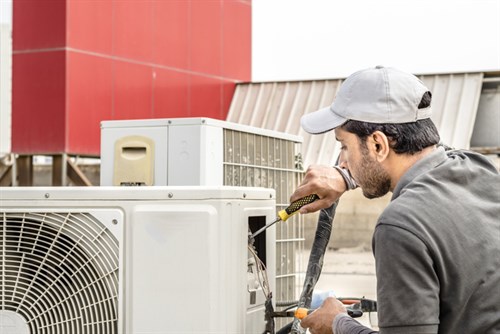Articles
What is HOA Preventative Maintenance
HOA Preventative maintenance refers to the routine maintenance tasks performed on the Association’s physical assets and mechanical equipment components. It helps extend the life of the different assets and equipment within the community’s property, decrease repair costs, and prevent the likelihood of equipment failure and unplanned downtime.

Why is Preventative Maintenance so Important?
Many associations offer impressive amenities and services. Examples include large recreation centers, buildings, clubhouses, fitness centers, swimming pools, rooftops, and other specialty facilities. Maintaining the value and aesthetics of the association amenities and the facility equipment is an important part of the management company’s services. A comprehensive Preventive Maintenance Program is a key component to a successful partnership.
Reactive vs. Proactive Maintenance
Reactive Maintenance is when maintenance on equipment is not performed adequately until the equipment breaks or fails. This strategy has several adverse results:
- It reduces the life expectancy of the assets and mechanical equipment components.
- It makes it difficult to effectively budget for repairs and maintenance, resulting in unexpected repairs or costly replacement costs.
- It creates additional expenses, such as after-hour service fees.
- Unexpected amenity closures typically result from repairs, and extended closures may occur while waiting for parts.
- It could cause last-minute closure notifications to owners, disrupting their plans and triggering frustration.
Proactive maintenance routinely addresses concerns and ensures equipment upkeep to prevent major failures. This strategy includes regular inspections and performing routine maintenance tasks, which has many positive results:
- It helps to extend the life expectancy of the assets and mechanical equipment components.
- Reduces unexpected amenity closures for needed repairs.
- Allows owners to receive timely notifications for scheduled upcoming closures.
Who is responsible for HOA Preventative Maintenance?
Preventive maintenance for master-planned communities, condominiums, and high-rise buildings is handled differently.
- Large master-planned communities typically have onsite staff responsible for preventative maintenance, for the onsite maintenance staff handles some items, inspection, and maintenance. In contrast, other items are scheduled to be inspected and maintained with the appropriate vendor. The maintenance staff should follow the Association’s preventative maintenance schedule and regularly meet with the onsite manager to report findings and address areas of concern. The onsite manager ensures that preventative maintenance inspections are performed.
- Preventative maintenance for condominiums and high-rise buildings will be a little different. Owners are responsible for items inside each unit, such as filter changes, cleaning condensation lines, and replacing batteries in fire alarms. Depending on the Governing Documents, the Association is responsible for the preventive maintenance of building equipment like roofs, exteriors, and plumbing.
- Condominiums with on-site staff would be responsible for preventative maintenance in the same manner as the master-planned community. If a condo has no on-site staff, the community manager would be responsible for the inspections and scheduling of vendors.
How to Create an HOA Preventative Maintenance Program
When creating a preventive maintenance program, include all assets and mechanical equipment components and establish inspection and maintenance schedules. Below is a step-by-step process for creating an effective preventative maintenance schedule.
- Start by making a list of all the assets and mechanical equipment. This will be your inventory list.
- Next, compare your list with the component list in the Reserve Study. This is an excellent way to ensure you have included everything. In addition, you can check the Reserve Study to confirm if any new assets or equipment need to be included when the Reserve Study is updated.
- Create frequency-based inspection schedules from the inventory list. When determining inspection frequency, both manufacturer recommendations and equipment age and condition should be considered.
- After completing the preventative maintenance schedules, the next step is to assign the tasks to the appropriate team members. This assigns responsibility and allows you to determine staff workload.
For inspections and services requiring a vendor, assign an onsite team member to schedule the inspection or service, confirm maintenance completion, and submit a vendor report. - The final component of a preventative maintenance program is establishing a system for recording and maintaining the data from the inspections and services. Historical data is important for future reference. This data specifies expenditure details, issues with equipment under warranty, and new assets needing inclusion in the next Reserve Study update. Keeping accurate records will save time and headaches later.
A successful HOA preventive maintenance program requires preparation, planning, and proactive scheduling. A professional management company can assist in creating a successful program customized to your Association’s assets.
